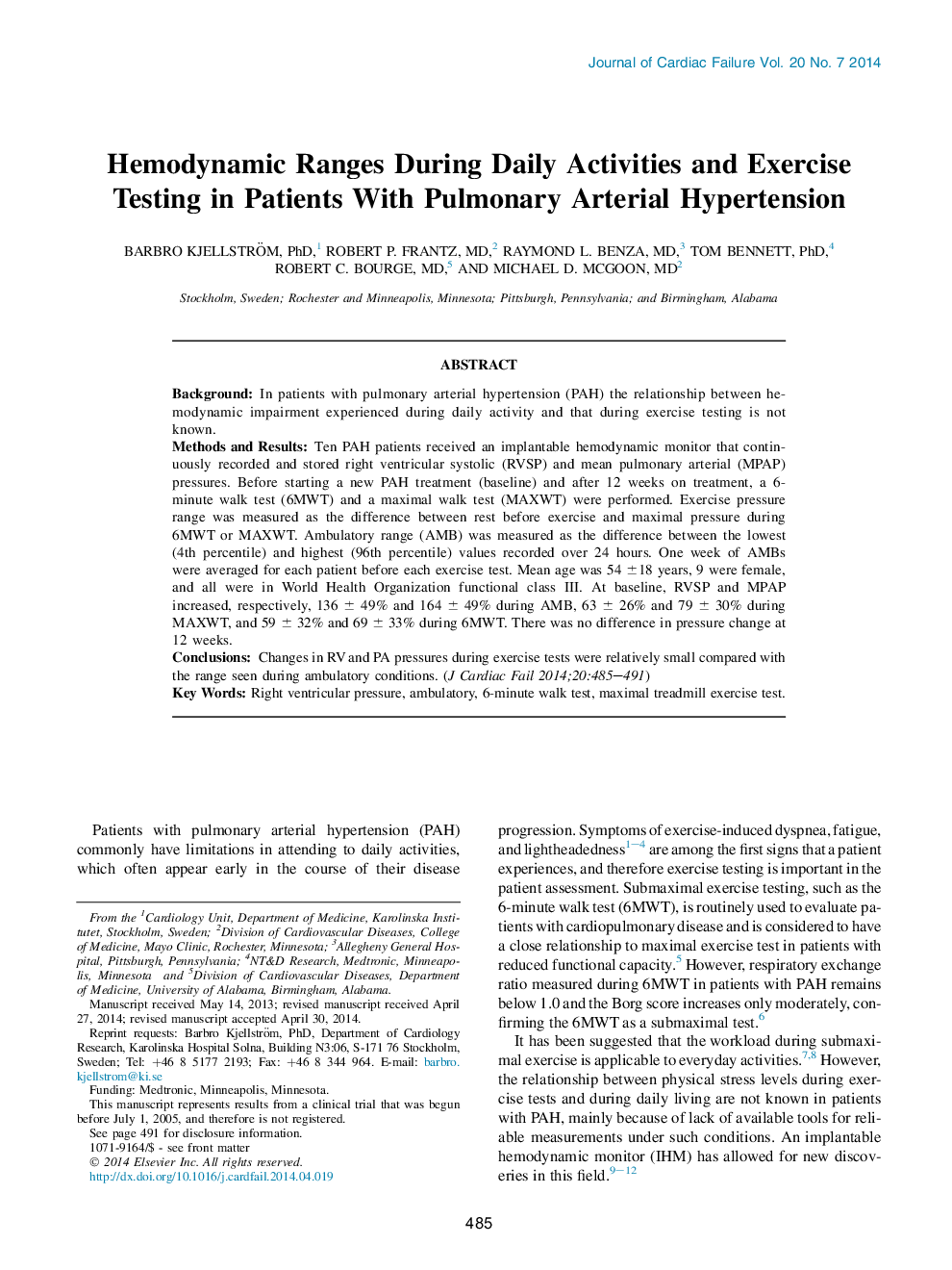| Article ID | Journal | Published Year | Pages | File Type |
|---|---|---|---|---|
| 5983678 | Journal of Cardiac Failure | 2014 | 7 Pages |
BackgroundIn patients with pulmonary arterial hypertension (PAH) the relationship between hemodynamic impairment experienced during daily activity and that during exercise testing is not known.Methods and ResultsTen PAH patients received an implantable hemodynamic monitor that continuously recorded and stored right ventricular systolic (RVSP) and mean pulmonary arterial (MPAP) pressures. Before starting a new PAH treatment (baseline) and after 12 weeks on treatment, a 6-minute walk test (6MWT) and a maximal walk test (MAXWT) were performed. Exercise pressure range was measured as the difference between rest before exercise and maximal pressure during 6MWT or MAXWT. Ambulatory range (AMB) was measured as the difference between the lowest (4th percentile) and highest (96th percentile) values recorded over 24 hours. One week of AMBs were averaged for each patient before each exercise test. Mean age was 54 ±18 years, 9 were female, and all were in World Health Organization functional class III. At baseline, RVSP and MPAP increased, respectively, 136 ± 49% and 164 ± 49% during AMB, 63 ± 26% and 79 ± 30% during MAXWT, and 59 ± 32% and 69 ± 33% during 6MWT. There was no difference in pressure change at 12 weeks.ConclusionsChanges in RV and PA pressures during exercise tests were relatively small compared with the range seen during ambulatory conditions.
